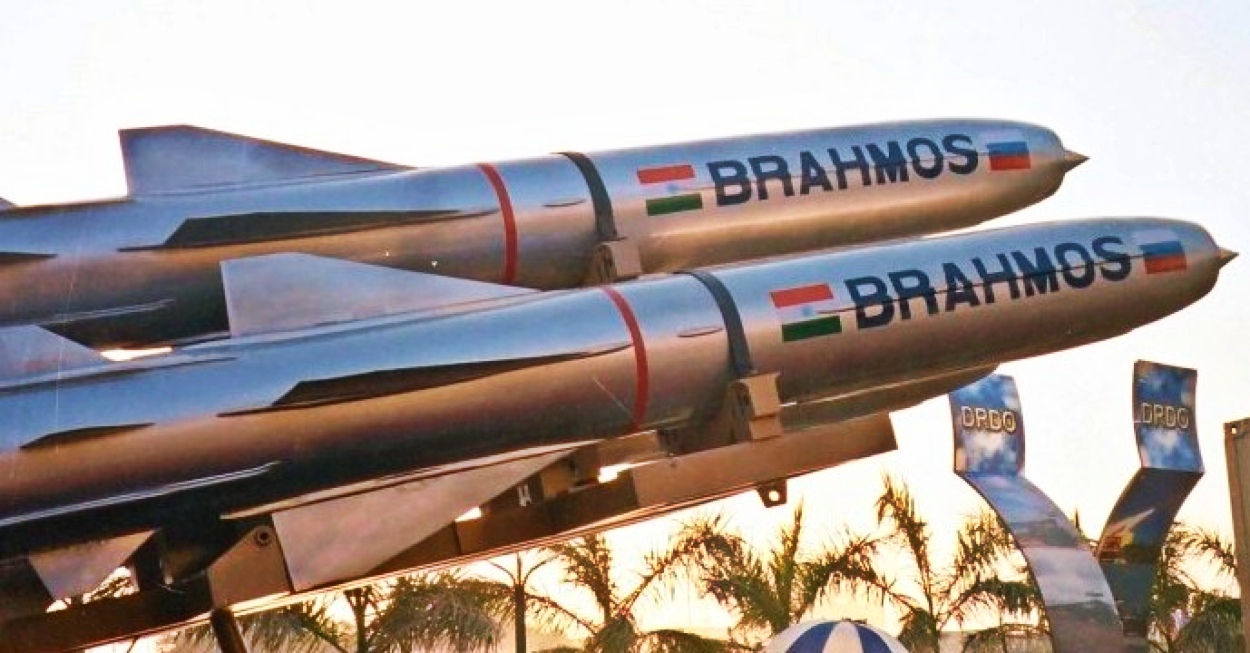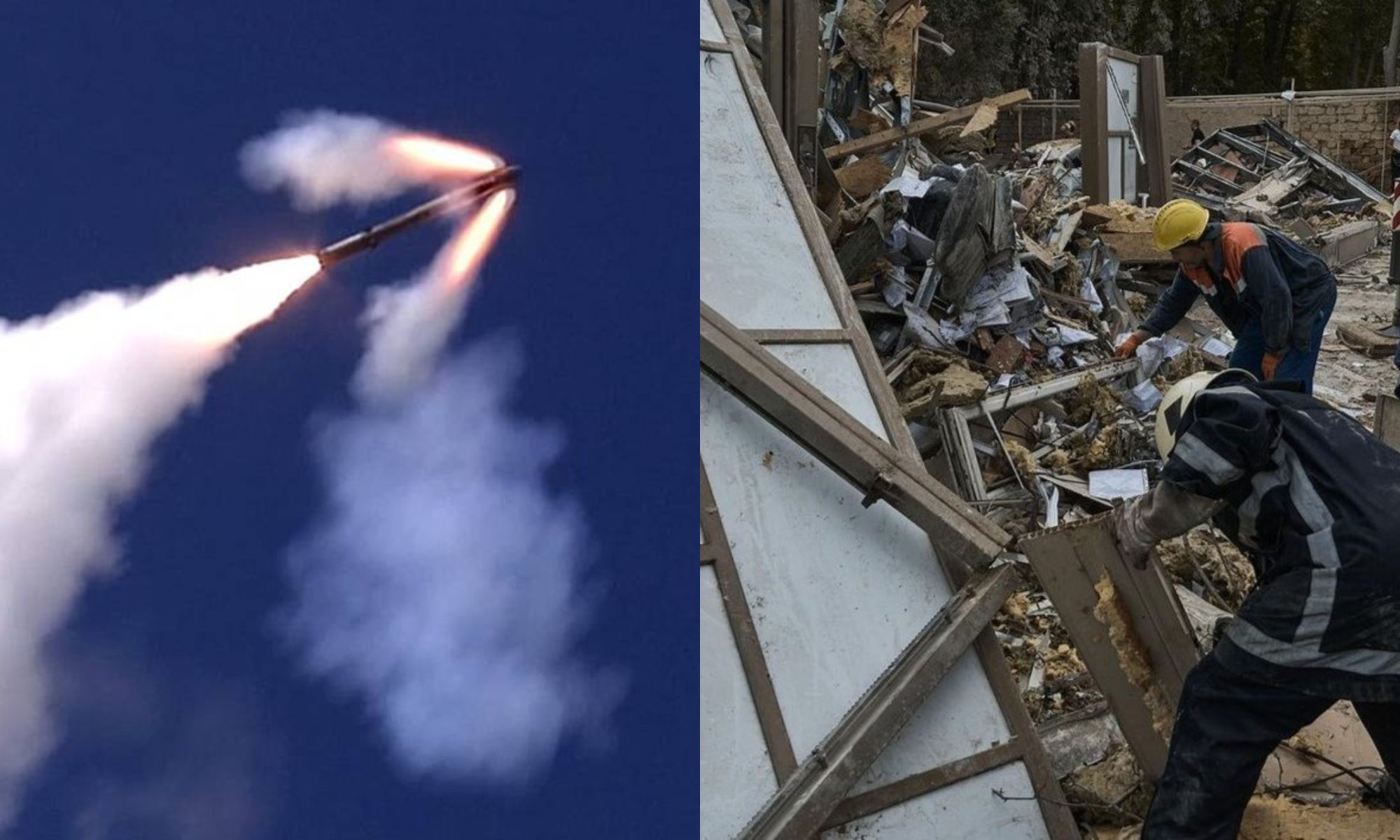India has reposed its full faith in the BrahMos Missiles – the Indian Navy has approved the purchase of 330 of them – but Russia has never shown any inclination to buy them. This is despite the fact that Russia is a co-developer of BrahMos and faces an acute shortage of missiles in its war with Ukraine.
The Indian Cabinet Committee on Security (CCS) has approved the purchase of more than 200 BrahMos extended-range (BrahMos-ER) supersonic cruise missiles for use aboard warships, significantly enhancing the capabilities of the Indian Navy.
The proposed acquisition agreement, which is valued at approximately ₹19,000 crore ($2.2B), is said to have been approved at a committee meeting on February 21. The Indian Ministry of Defense (MoD) is anticipated to sign an agreement with BrahMos Aerospace for the purchase of BrahMos-ER in the first week of March.
The development comes weeks after the Indian Navy tested the missile for the second time in January. The service announced the successful test on Platform X: “Indian Navy & M/s BAPL (BrahMos Aerospace Private Limited) carried out successful engagement of land target at enhanced range with an advanced supersonic cruise missile. This endeavor revalidates ‘Aatma Nirbharta’ (self-reliance) for extended range precision strike capability from combat & mission-ready ships.”
The stealth destroyer INS Chennai carried out the first test on March 5, 2022. After completing intricate maneuvers and traveling a long distance, the missile struck its target with remarkable precision. The missile has air, land, sea, and submarine-launched variants. However, the enhanced range version is yet to be inducted into the Indian armed forces.
BrahMos, which has been fitted on several Indian Navy warships, has a range of 298 kilometers. While the Indian Navy has refrained from giving the new extended range of the missiles, military experts predict it to be between 450 to 500 kilometers.
A retired Indian Navy officer earlier told the EurAsian Times: “It (the test) extends Indian Navy’s standoff capability to engage strategic land targets from sea, at a longer range, while remaining outside the range of enemy’s coastal and missile defenses.”
“The real game changer would be firing the BrahMos-ER from a submarine. Combining stealth with extended range, a submarine could threaten targets in Pakistan, north of Larkana,” the retired naval officer added.
Developed by the Reutov Design Bureau in the late 1980s, BrahMos is an upgraded version of Soviet-era anti-ship missiles (Oniks, Yakont) and is jointly developed by Russia’s NPO Mashinostroyeniya and India’s Defense Research and Development Organization (DRDO).
BrahMos Aerospace’s headquarters is in New Delhi, and this missile has become a poster child of India’s defense exports in recent times.
BrahMos is a solid propellant booster-powered supersonic cruise missile that can be fired from land-based canisters, submarines, ships, and aircraft. Its current top speed is Mach 2.8 to 3.0. It can fly very close to the ground to evade missile defense systems, which is one of its unique characteristics.
#WATCH | Imphal (Yard 12706), Indian Navy’s latest indigenous guided missile destroyer, scored ‘Bulls Eye’ in her maiden Brahmos firing at sea.
First ever test-firing of Extended Range Brahmos missile before a ship’s commissioning underscores Indian Navy’s unwavering focus on… pic.twitter.com/hdXFGXS7se
— ANI (@ANI) November 22, 2023
The missile can fly as low as 10 meters above the earth during the terminal phase. In the final phase, the missile relies on active radar seeker or inertial guidance. Additionally, the BrahMos missile executes an evasive “S-maneuver” just before impact, making it challenging for the enemy’s defenses to bring it down at close range.
BrahMos missiles can overwhelm the layered defenses of any modern warship. The missiles are designed to skim at a very low altitude to the target when they are launched within 120 kilometers of it.
There would only be a 30-second window of opportunity for a target warship to react when it can detect approaching BrahMos skimming the sea surface from a distance of 30 kilometers away. These cutting-edge features make this Indo-Russian cruise missile a force to reckon with.
Its unique characteristics notwithstanding, Russia has not shown any interest or willingness to purchase the BrahMos missile. On its part, India has been looking to sell the missile to foreign customers, especially to countries in the Southeast Asian region and the Middle East — largely due to a sale to the Philippines. Russia, however, has not figured in the list of potential customers until now.
Russia Does Not Want BrahMos?
CEO of BrahMos Aerospace, Atul Rane, told TASS in 2022 that supersonic cruise missiles made by BrahMos Aerospace may be stationed on Russian carriers if the Russian government permitted it.
At the time, the CEO mentioned that “at every shareholder meeting, at every supervisory council meeting, and every board meeting,” the issue of contracts from Russia was brought up.
“It is up to the Russian government to decide whether [the BrahMos] should be put [on Russian carriers]. A decision to use a foreign weapon in the Russian Armed Forces is purely Russian decision,” Rane said while iterating that Russia views the BrahMos missile as partially foreign.
The missile can be installed on Russian carriers “if the Russian government says ‘yes,'” according to Rane, who also mentioned that the missiles can be installed on any Russian vessel.

Russia has been carrying out missile attacks on Ukraine in the nearly two years of war with Ukraine. There have been recurrent reports stating that Russian forces were exhausting sophisticated missiles faster than it was able to produce them.
In fact, due to an alleged shortage, Russia has had to turn to its friends and partners like Iran and North Korea to acquire missiles that could be deployed against Ukraine. The international sanctions imposed on Russia are believed to have curtailed its capacity to churn out advanced missiles.
In an interview with TheWeek, Rane asserted that they “have been continuously looking at Russia as a market for the BrahMos.” “If they had purchased it then, they would have had a lot of things to use in the current situation,” Rane told the magazine in an interview.
He was referring to the current war in Ukraine, where he implied that the missile would have been significantly helpful in striking Ukrainian land targets. “After the ongoing situation in Europe ends, we might get some orders from Russia, especially for the air-launched BrahMos,” Rane added.
Despite the shortage, Russia has not initiated talks for the purchase of BrahMos missiles — based on the Yakhont and P-800 Onyx — which have been extensively used by Russian troops in the ongoing war. The missile would have been ideal for the Russians since it could be launched from air, sea, and land.
A reason why Russia isn’t buying the BrahMos was indicated in Rane’s interview itself, where he said, “(the Russians) moved from P800 to another area of work, and they are happy.”

Russia already uses the Onyx missile, an anti-ship weapon, as a part of its Bastion-P coastal missile defense system. According to a November 2022 story by the EurAsian Times, Russia is also working on a launcher that can fire the Onyx and Zircon (Tsirkon) anti-ship missiles.
Both missiles are capable of land attack missions. A month after the war started, on March 23, 2023, Russia launched a P-800 Onyx from a Bastion battery in a warehouse in Ukraine close to the Black Sea port of Odesa. The structure included weapons and ammunition, according to the Russian Ministry of Defense (RuMoD), and was successfully hit.
Russians may argue that they possess a wide array of missiles and launching systems, such as aircraft like the Tu-160, Tu-95MS, MiG-31K, and Tu-22, as well as warships and ground launchers. And it wouldn’t make sense to add a slightly more advanced missile to their inventory in addition to the ones they already have.
In its long-range missile strikes on Ukraine, Russia has used air-launched land-attack cruise and ballistic missiles such as the Kh 101, the Kinzhal hypersonic missile, the Kalibr, and the Iskander.
When Russia has hypersonic Zircon (Tsirkon), it does not really need BrahMos. Moscow has very similar missiles in its arsenal, and there is no need to buy “foreign” weapons, a military expert told ET while requesting anonymity.
- Contact the author at sakshi.tiwari9555 (at) gmail.com
- Follow EurAsian Times on Google News




